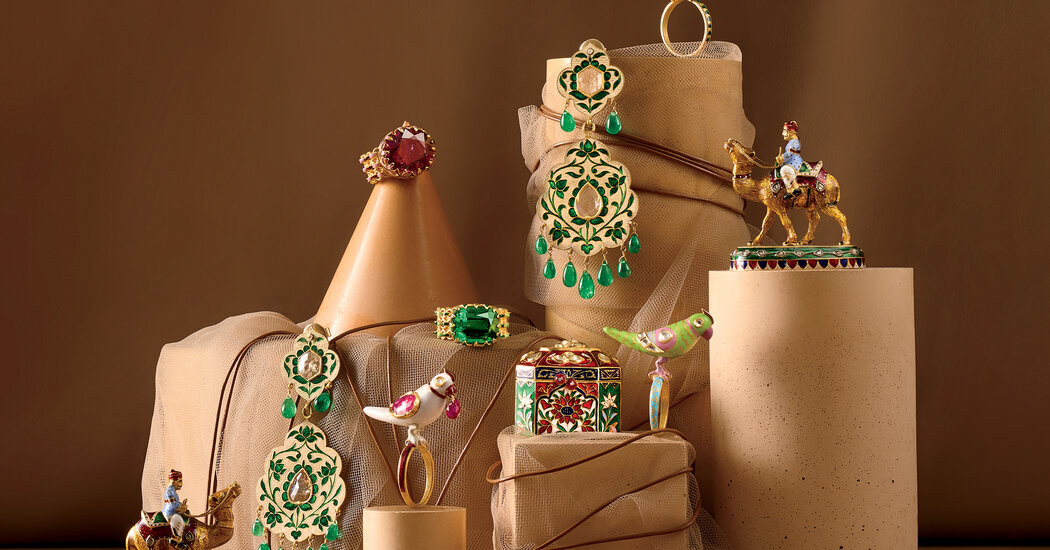Since its founding in 1852, the Jaipur, India, jewelry emporium the Gem Palace has been known for its dazzling diamonds, rubies and sapphires. But Siddharth Kasliwal, a partner at the Gem Palace and the creative director of Munnu the Gem Palace — the New York City atelier started by his late father, Munnu — has a secret. “Buying and setting stones is very easy,” he says. “It’s enameling that’s difficult. Enamel work made our family what it is, and it’s where true craftsmanship lies.” Now, nearly seven years after designing his last collection, he is unveiling a new group of enamel pieces that celebrate this overlooked and, he says, underappreciated art.
One of the most ancient forms of surface decoration, enameling was brought to India by the Persians in the 17th century. At Kasliwal’s Jaipur workshop, artisans begin the process by etching gold with ultrafine tools before applying paste-like pigment made from powdered glass and firing it all in a kiln. “The etching and painting take an extremely steady hand,” Kasliwal says, adding that “the enamel can shatter if it’s fired incorrectly.” Kasliwal employs about eight enamelers but, he says, “perhaps only three are master enamelers. Because the work is so tedious, enamelers tend to retire early, even before they turn 50.”
Kasliwal’s forefathers were expert enamel craftsmen based in Agra when Jaipur was founded in the early 1700s. “The maharajah was so impressed by their work that he invited them to move to the city in the 1780s,” says Kasliwal. Infamous devotees of opulence, the maharajahs enameled “everything,” he says, including “dagger handles, sword cases, chess sets, snuff boxes and, of course, jewelry.” A gem-encrusted necklace would typically feature an elaborately enameled back, which not only prevents snags on clothing but also embodies the concept of the wearer’s pleasure — the idea of unseen private beauty. “In India, a connoisseur can evaluate the value of a diamond necklace by looking at the quality of the enameling on the reverse,” Kasliwal says.
Among the pieces in his new collection are emerald-accented earrings featuring an ingenious double-sided design, as well as whimsical parrot rings with microthin ribbons of color around the birds’ throats. One parrot’s beak is such a deep, glossy red that it resembles the ruby dangling from its tip. Not all enamel, Kasliwal says, is produced so painstakingly, with such high-quality materials….
Click Here to Read the Full Original Article at NYT > Travel…
